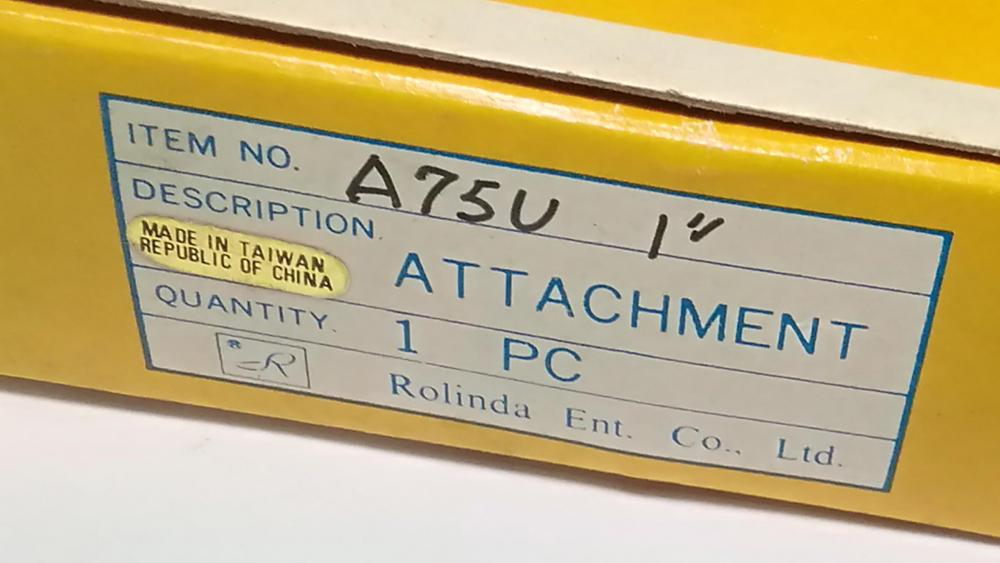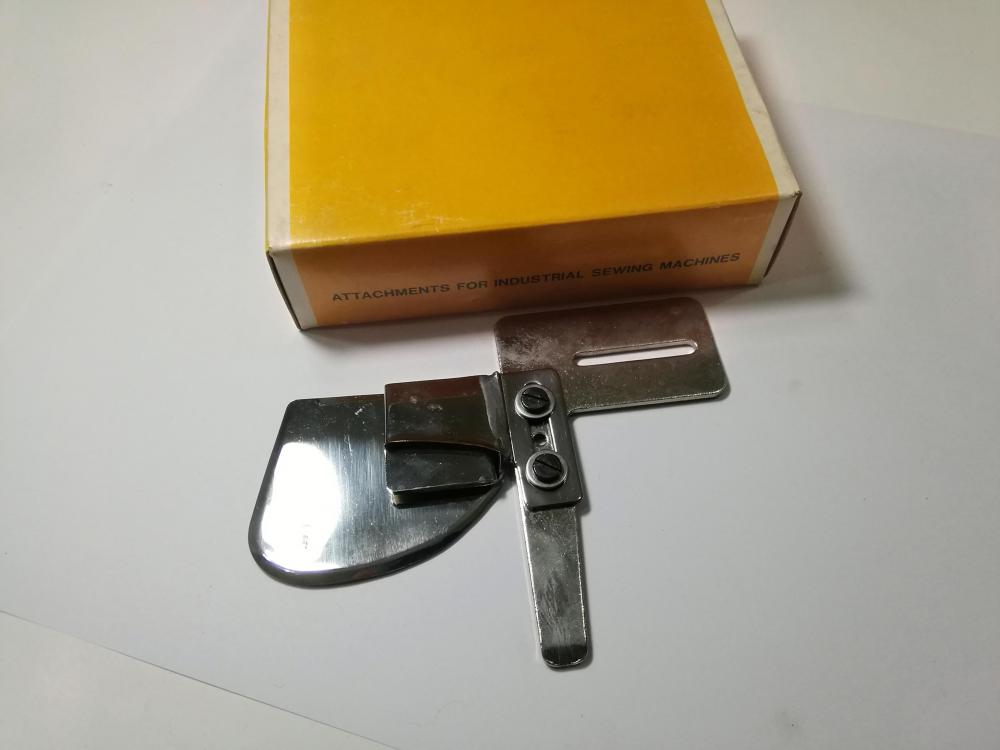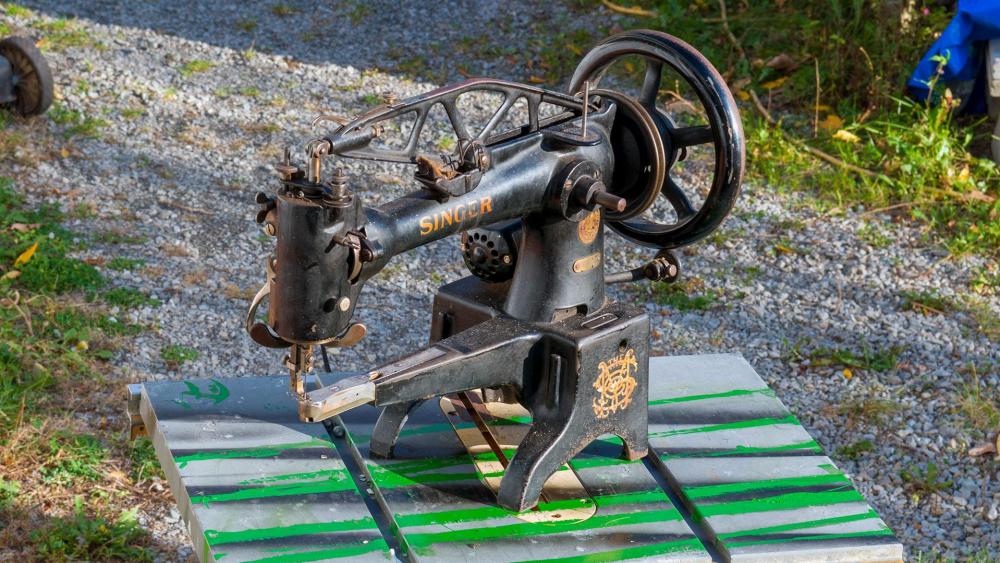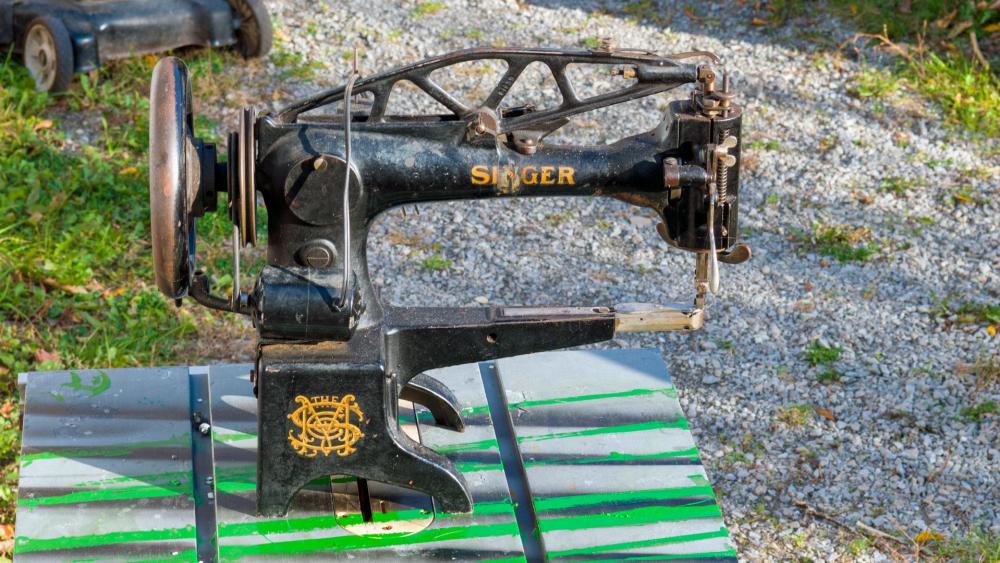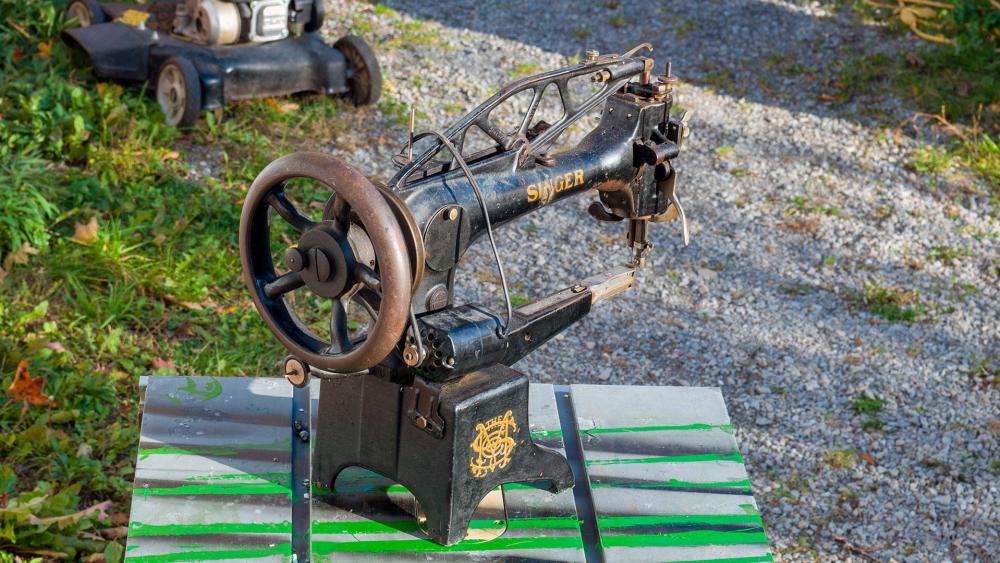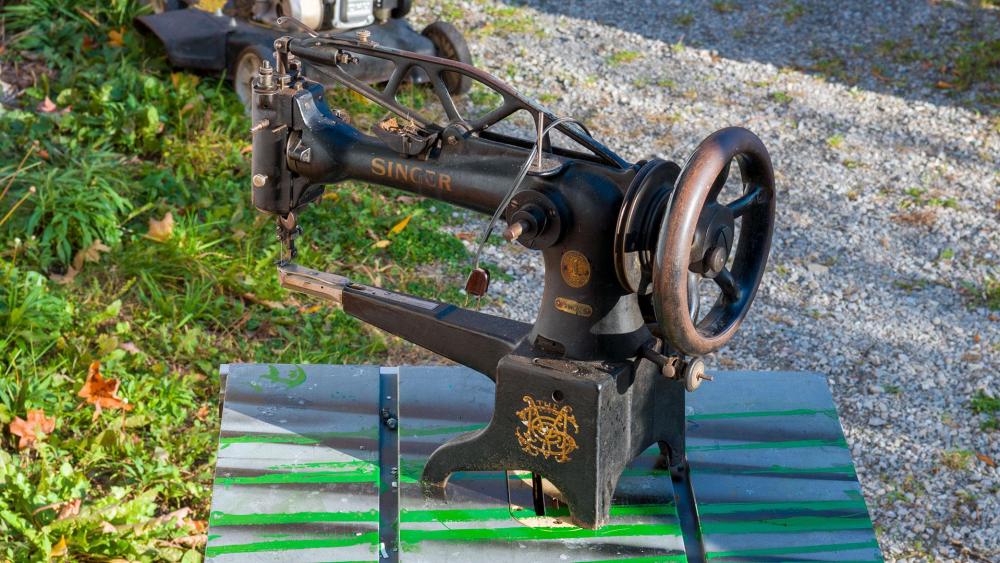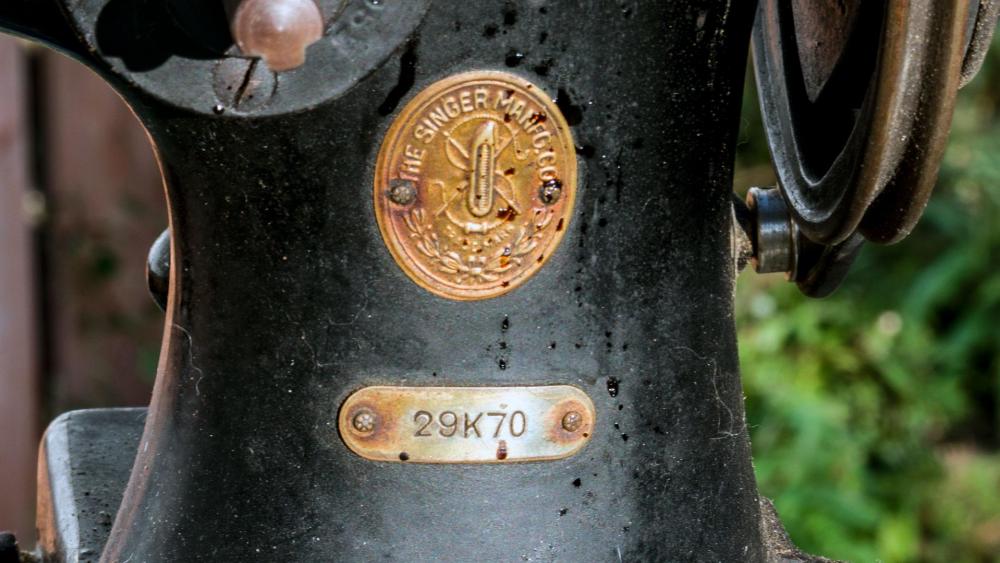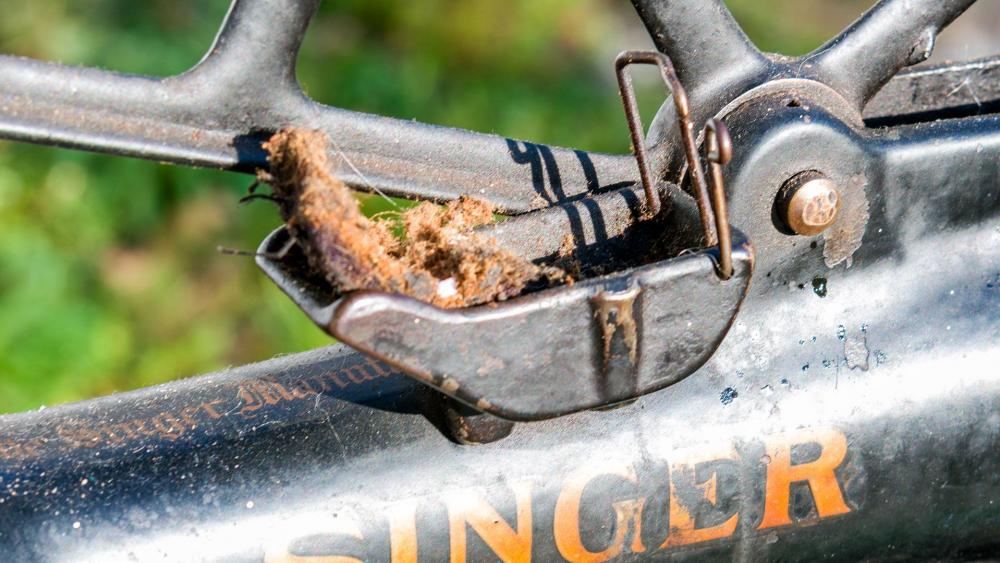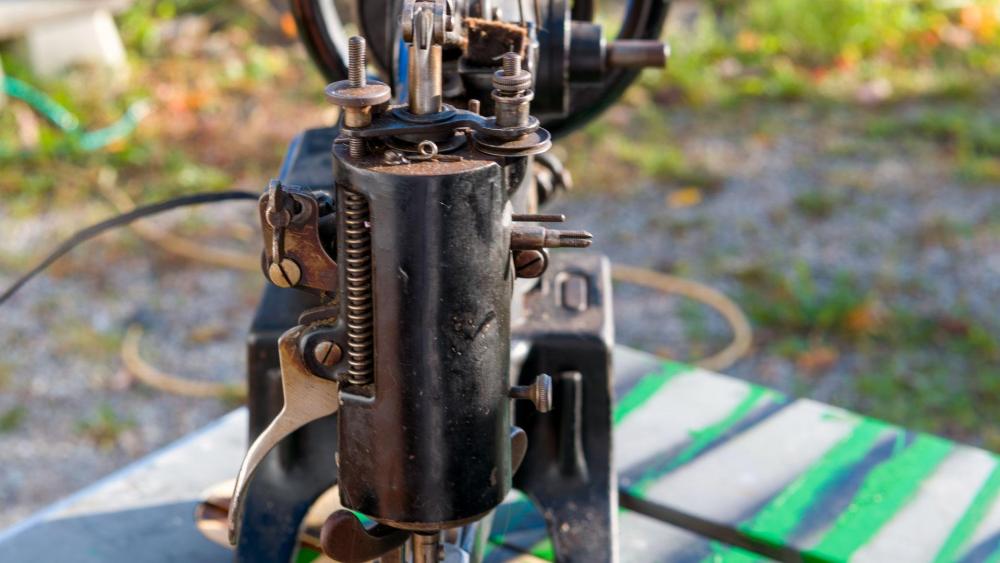
kgg
Contributing Member-
Posts
3,308 -
Joined
-
Last visited
Content Type
Profiles
Forums
Events
Blogs
Gallery
Everything posted by kgg
-
Which would you choose: Pfaff 145 H4-6/01 or Singer 211u166KA?
kgg replied to SewCool's topic in Leather Sewing Machines
The Juki brand of machines are a really good machines which most of the clones are copied after and parts/ accessories are easily found at reasonable prices. The $1350 price is way over what I typically see here in Ontario for Juki 563's. which usually go for between $580 US ($800 cad) and $725 ($1000 cad). Once you get into the $1300 usd plus price range you would better off ordering a new machine like a Consew 206RB-5 with a table and servo motor online for $1449 plus shipping from a dealer like Toledo Industrial Sewing Machines (www.tolindsewmach.com/consew-206rb.html). kgg -
Which would you choose: Pfaff 145 H4-6/01 or Singer 211u166KA?
kgg replied to SewCool's topic in Leather Sewing Machines
Neither. My reasons are: 1. PFAFF: Parts / accessory costs for the Pfaff are in general more costly and in my area not an overly popular brand name which makes it more difficult to resell down the road. Price also seems high but that will depend on your area. 2. Singer: The price of the machine is high particularly when you add in the cost of a table and a servo motor. A servo motor will probably run around $150 US and a used table probably another $100 so the machine would cost around $1000 US. Also without the machine mounted in a table how can you really tell if it is in good running condition???? I would suggest going to a industrial sewing machine dealer with what you want to sew and see what they can offer in both a new machine and a used one. kgg -
While sorting and taking some photo's of the 2000 plus bits and pieces I started to notice some of the Rolinda attachments had a small gold tag on the label. I thought this was interesting since the company is out of Taiwan, Rolinda Enterprise Co. Ltd, that started up around 1979. So those items had to be produced between 1979 and 1987. All the attachments are for industrial sewing machines ranging from 1/4" to 5 1/2" like edge binders / hemmers, etc with 90 percent still in their original boxes from companies like Suisei , Golden Eagle and Rolinda. kgg
-
Since this is an older machine which I don't think is that common my main concern would be getting replacement parts at a reasonable price. The price to me seems on the high side for the amount of wear in the photo of both the machine and the table edge. But these days the price of everything particularly sewing use sewing machines are all over the place. To help determine the amount of wear on the machine are there any thread paths cut into any of the guides? Even though the machine has a larger size bobbin then your Juki LU-562 another consideration would be the max needle size is a #22 which would allow for V92 in thick material or V138 in thinner material. If you can test drive the machine take a sample with the thickest material including seams and see how it works. At the price, I would pass and look for Juki DNU-1541S, new (~$1800) or a similar clone or a more common good used machine where parts and accessories are really available. kgg
-
The link to "Change Presser Foot Lift On Rex 607z Sewing Machine" which are the same as all the other portable walking foot clones ( https://www.youtube.com/watch?v=pqk1OUR72Ig ) may help in getting a higher lift then the normal 1/4". According to the video in about the 1/2" range. There maybe other problems doing this????? Another solution for belt replacement is to use Rough Surface Polyurethane Belting like the green colored ones made for drives. It's cheap, comes in various diameters, you get about 33 feet in a coil, easy to join and get the exact length needed for about $25 USD off Amazon ( https://www.amazon.ca/gp/product/B07W4HKK7H/ref=ppx_yo_dt_b_search_asin_title?ie=UTF8&th=1 ). If nothing else to get you out of a jam you should have a coil just in case you break a belt and can't really get the proper one like on a Sunday. kgg
-
Check with Hoffman Brothers in Chicago I think they bought a lot of Ferdco stuff. kgg
-
As Wiz has said the Juki is one of the best sewing machine brands out there. Lots of accessories are available and fairly inexpensive compared to some of the other brand names. The Juki DNU-1541's are still made in Japan and come in two versions the DNU-1541 or DNU-1541"S". Capability wise no difference just the DNU-1541"S" has a safety mechanism that will trip should you jam up and at some point I think everyone will overload a machine at least once. The cost difference on a quick check of the sew machines plus website shows the new cost of DNU-1541at $1729 US and a DNU-1541S at $1795 US. Those prices include a table and servo motor but shipping is extra. Those prices will give you an idea of how good or bad the price for the use one is in comparison. kgg
-
Save yourself some money and 1) get a clone like the Reliable Barracuda or the Kobe LSZ-1 for about $500 US 2) mount it in a table similar to what I an others have done for less then $75 US 3) If you like what they can do with the machine add a servo motor Reliable sewquiet 6000sm for $200 US. I don't know who copied it Sailrite or Reliable but it is the same motor as on the leatherworker. This is how I decked a portable walking foot out. Since you first priority is bags a compound cylinder arm would definitely be the way to go but look at machines in the Juki 341/ 1341 class not the 335 class as most can only do V92 thread. I would suggest adding more dollars to your budget of $1500 and get either a new machine or find a good used brand name machine. I think you will be sadly disappointed with the portable Sailrite. Another thing is the stitch length will decrease as the thickness being sewn increases on these machines. Sailrite machines are also made in China however their quality appears to be better then the other portable sewing machines. Going to depend on what size of thread you want to use and the thickness of material you want to sew. If all you think you need is a plain jane flatbed machine maybe consider the industrial Juki DU-1181n for about $1400. If it doesn't workout you should be able to sell it fairly easily without to much of a loss. Rather then just gamble on a machine you should really go to a brick and mortar dealer and test drive a few machines with what you want to sew. kgg
-
I should have corrected my post the handwheel does have the ability to accept a turning knob but it appears that it was removed at a very early part of it's life or was never installed as there was no rubbing marks whatsoever around the hole. On cleanup I figure they must have just removed the thread from the needle and wound a bobbin or wound a bobbin as they were sewing with the motor running. Everything on the end shaft was seized to the shaft the eccentric, the spring loaded disengaging pin and pullout mechanism were seized into both the hand-wheel and the eccentric, the two eccentric set screws, and the large center screw of the handwheel. The hardest part was getting the two set screws out then it was a matter lots of oil, pounding wedge, a 32 oz hammer and a few good selective words finally got those parts off the end shaft. The winding arm looks like it was never placed to the front side of the frame as the groves in the side mounting shaft look like they were never touched by the two sets screws. Personally I like having the handwheel on the side of the patcher as I think it is more convenient then reaching to the end of the machine to handwheel. Once I get it running I plan on adding a couple of items to this machine like what I added to the my Singer 29K71 so I can utilize the darning tensioner as a bobbin thread tensioner and wind a bobbin as I am sewing. kgg
-
The OA Leather Supply website says it is as you stated at 0.8mm but if you go to the Black Crown site ( blackcrowngarage.com/thread-shop/product/b-277-halloween-bundle-1-4lb-spools/ ) you will see it should be 0.667mm for their Polyamide 66 Thread in size V277 thread. I think there was a minor mistake made on the OA Leather Supply website. In general as there are a couple of exceptions threads for any given sizing system has to meet a certain criteria for a particular size. When it comes to threads and systems you can go down a very long and deep rabbit hole particularly if you try and convert from the older systems. Most threads in North America use the US twisted thread standard (Vxxx) or the Tex (Txxx) designations where a 1000meters weights so many grams. However in Canada you are liable to see the metric designation (Tkt xx or Mxx or #xx) as well where the smaller the number the bigger the thread. The easiest thing to do is get comfortable with a sizing system and stitch to it for both the needle and thread sizes. kgg
-
Thank you, I'll go through it later today. kgg
-
Don't cheap out and buy a machine based on price alone. Buy the best machine for what you are planning on sewing and remember no one machine will do everything well. That is why some have more then one machine. There is nothing worst then buying a machine, irregardless of price, that is not capable of doing what you want or are prone to problems. Those machines are soon replaced usually at a dollar loss. If you buy a brand name machine you will pay more up front but if you decide at some point to replace the machine a brand name machine (Juki, Adler, Pfaff, etc) will command more dollars and be easier to sell on the used market. Trying to compare the Cowboy CB341 which is a industrial class 341 / 1341 to the Sailrite Leatherworker which is not an industrial machine is like comparing apples and oranges. If you can only afford one machine buy a industrial class cylinder bed with a flatbed attachment and as time goes on invest in an industrial flatbed machine. kgg
-
Help identifying Consew Cylinder bed machine
kgg replied to CitroenLVR's topic in Leather Sewing Machines
To me it looks like a Consew 287R. kgg -
A couple of questions: 1. What size of thread are you using? 2. What size of needle are you using? The Cobra class 4 is a 441 class machine and this class of machine shines at sewing thick stuff with heavier weight thread up to 7/8" thick. The min thickness this machine is listed at is 6 oz leather (4.5mm) and you are wanting to sew 4mm or 5.5 oz leather so you are just a touch below. There a couple of articles by Wiz on what adjustments you may have to do in order to sew thinner material and RockyAussie has a needle plate designed to help with sewing thinner stuff. I am not saying it won't sew that thin but I think a class 341 like the Juki LS341 / 1341 machines or Cowboy 341 or Techsew 2750 would probably have been a better choice. kgg
-
Try Japan Sewing Machine & Supply Co. (905) 764-0100 in Richmond Hill or Civit Sewing Machines in Lucan (800) 388-3638 / (519) 227-1193. Another option maybe a plate from a clone machine like a Cowboy, Cobra or Techsew machine would work. Really nice machine. kgg
-
Great information, thank you. kgg
-
Keep in mind that no one machine will do everything. The Leatherwork (~$1400 usd) which is a flatbed that is basically a Sailrite LS-1 straight stitch machine put into a short table with a nice 12 coil servo motor. That machine can handle up to a #20 needle so the max size of thread for that size of needle is V92. These portable sewing machines were originally designed as a on board sail cloth repair machine. It probably can sew up to a max thickness of 1/4" of material. They do have there place as all machines do but it would not be my first choice. Since you are planning on sewing bag type items a cylinder arm machine would I think be a better choice in the Juki LS-341 or Juki LS-1341 class with a flatbed attachment. There are many clones in this class so you will have lots to choose from either in the new or used market. Buy Once, Cry Once kgg
-
That spring on closer examination is missing. Another part to replace. Thank you for the link to the manual. I did have that manual. I am having a job to tracking down a manual for Singer 29K70. It seems as though the 29K70 was short lived after replacing the 29k58, 60, 62 series and then replaced by the Singer 29K 71, 72, 73 series machines. Another question I have is normally the top thread is tensioned by the top tensioner but for Darning you would use the darning tensioner on the side. Why, what difference would make and are there any video of a 29K's out there showing it Darning? kgg
-
I am assuming you mean the one at the top of the head just after the top thread tensioner and before the thread goes down the shaft. Seems to be in good shape, with no thread groove worn into it. I cleaned the machine yesterday and nearly got sick to may stomach. I was a fairly heavy smoker at 4 packs a day for many many years but when I hit it with some cleaner/degreaser the nicotine literally run off just about every surface of the machine. The smell will lets say it was a very distinctive odor that every smoker knows only to well. Glad I done the cleanup outside. No, I also thought the same thing but it was an old felt pad soaked in oil. kgg
-
I'll start the cleanup process over the next couple of days while I wait for a couple new parts, new motor with foot controller, top thread tensioner and darning tensioner. I have also never seen a oil pad in the wax pot but have seen 29k's with a helper motor some were geared while others were similar to this one. kgg
-
Personally I have never had a much of a problem with belt slippage on any of my machines and haven't needed to fiddle with the servo motor pulley size. When belt slippage has happened I was asking/hoping it would punch through something that was beyond the machines sewing limits. In those cases the belt slippage was a good thing and prevented possible damage to internal parts. lf I were to consider putting a speed reducer on or changing the servo motor pulley size it would be just to gain lower speed control not for extra punching torque. In the end I guess the Engineers who design the machines have to take into account the stress that can be placed on internal parts and what size of motor / pulley sizes that would best accommodate the majority of users for a particular machine. kgg
-
I came across a 98 percent complete Singer 29K70 for a steal. It was dragged out of a guys basement. According to the serial number it was built in 1944 at Kilbowie, Clydebank, Scotland. The oddity that caught my eye was the little domestic type sewing machine motor that was attached buy a rubber belt to one of the pulleys. The motor works but needles a foot controller or I may just replace it with a new one unless I can find a proper Singer treadle stand. It is in desperate need of a good cleanup, few touch ups on the paint, a good redneck oiling and a few warlock attachment upgrades. The top thread oiling pad is even still in the top wax pot and an old threaded bobbin still in place. There seems to be a couple of small pieces missing or needing replacement but the machine is free moving on the hand wheel, the presser foot and the needle are all moving as they should. My other Singer 29K71 made in 1949 but released in 1951 is a short arm, small bobbin while this one a Singer 29K-71 is also a short arm, small bobbin. Both have the ability to mount the hand-wheel on either the front side or the end. The difference so far appears to be the Singer 29K71 handwheel was cased without the ability to accept the small wooden crank knob for easier hand wheeling. I think it is probably worth saving from the scrape pile. kgg
-
A good example of the belt contact surface would be: i) a 75mm diameter circle would allow a belt to contact with half of the circle at any given time. That means the belt actually contacts 117.81mm of the pulley surface ii) a 50mm diameter circle would allow a belt to contact with half of the circle at any given time. That means the belt actually contacts 78.54mm of the pulley surface iii) a 40mm diameter circle would allow a belt to contact with half of the circle at any given time. That means the belt actually contacts 62.83mm of the pulley surface A 40 mm circle would only have 53.33 percent of the contact surface as a 75mm circle. kgg
-
There are a lot of clones of the Juki 1341 the Kobe LS-1341 and Techsew 2750 to name a couple. That makes access to attachments and replacement parts really available. However the genuine Juki parts are of better quality / consistency and with that comes the premium price. Even simple items like after market bobbins may work, may not but Juki bobbins always work. I use after market items off such sites as Aliexpress or Amazon for binding attachments made for flatbed machines so I can utilize them on all my machines rather then having a dedicated set for just the 1341. This for me is cost effective. Flatbed binders cost less then $15 ea while 90 binders are $100 each. The downside is that you can't get the item being edged as close to the needle as if you were to use a 90 degree binder. It will depend on your pocket book and what you are binding. If I were you I would consider using your Class 4 with the needle plate that RockyAussie developed. Topic ( "A liitle change to make a BIG differance on Cowboy sewing machines" ). It maybe worth looking into and potentially saving the cost of another machine. kgg
- 2 replies
-
- 1341
- pressor feet
-
(and 1 more)
Tagged with:


